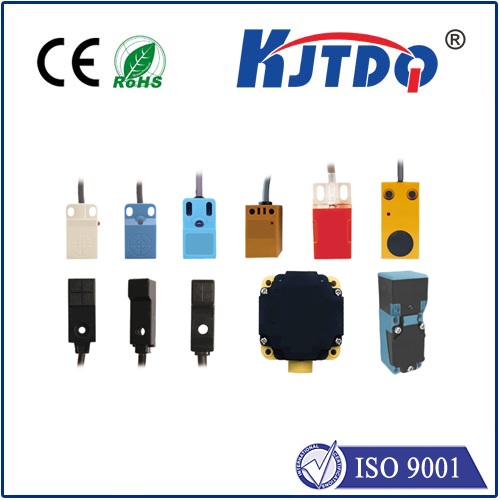
Selection criteria for square proximity switchesMainly including the following key factors:
Sensing distance:
- Choose the appropriate sensing distance according to the requirements of the application scenario. Different models have different detection distance ranges, generally ranging from a few millimeters to tens of millimeters.
- If you need to sense objects at a greater distance, you should choose a model with a larger sensing distance.
working voltage:
- Select the appropriate working voltage according to the power supply requirements of the equipment. The common operating voltage range includes direct current (DC) and alternating current (AC), such as 12V, 24V, 110V, 220V, etc.
- It is necessary to confirm that the voltage range of the selected switch matches the power supply of the existing equipment.
type of output:
- The output signal types are divided into NPN, PNP, NO (normally open), NC (normally closed), etc. When selecting, the input type and logic requirements of the connected device should be considered.
- Some applications may require proximity switches with multiple output modes, such as analog output or digital output.
Installation method:
- Square proximity switches usually have various installation methods such as threaded, flat, and bracket installation. The selection of the appropriate installation method depends on the design of the installation space and mechanical structure.
- We also need to consider the size of the installation space and the requirements for the volume of the proximity switch.
Environmental adaptability:
- Ensure that the switch can adapt to the temperature, humidity, dust, and other special conditions of the working environment (such as waterproof, explosion-proof, corrosion-resistant, etc.).
- For special environments, proximity switches with IP protection levels (such as IP67 or higher) or specific material enclosures should be selected.
response speed:
- If used in high-speed detection scenarios, response speed is a key indicator. When selecting, the response time of the switch should be considered to ensure timely detection of the target object.
Cable length and connection method:
- Select cables of appropriate length or models with connector interfaces based on the distance between the device and the proximity switch to facilitate wiring and maintenance.
- Some switches provide quick plug and unplug connectors for easy replacement and debugging.
Brand and compatibility:
- Choosing proximity switches from well-known brands can ensure quality and reliability, and compatibility with other devices should be taken into account when using them in existing systems.
By considering these factors comprehensively, the most suitable square proximity switch model for application needs can be selected to ensure stable and efficient operation of the equipment.
Related Q&A FAQs:
1. Can the sensing distance of the square proximity switch be adjusted?
Users may want to know if the sensing distance of the square proximity switch can be adjusted according to actual application scenarios, and how to adjust it.
2. How does the square proximity switch perform in harsh environments?
Users may be concerned about the reliability and durability of square proximity switches in harsh environments such as high temperature, humidity, dust, or vibration.
3. How to choose a square proximity switch suitable for different material targets?
Users may want to know how to choose a suitable square proximity switch based on the target material (such as metal, plastic, or wood), and whether there are specific model recommendations.
